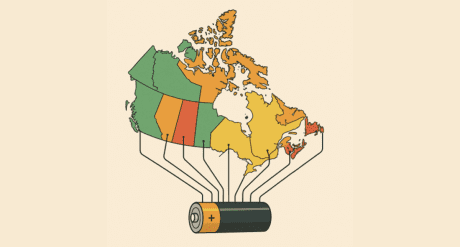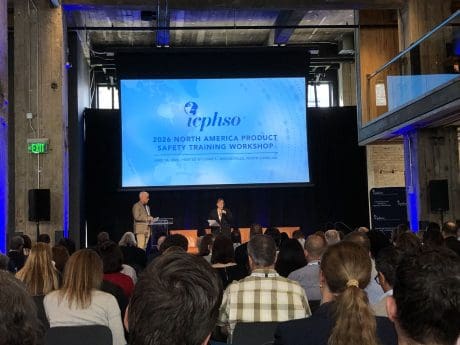
The Weekly Pulse: 30th January – 3rd February

What’s HOT in our Regulatory World
What are our clients looking at?
This week’s trending sources in C2P
- EU: Call for Evidence on New Product Priorities for Ecodesign for Sustainable Products, Consultation Document, January 2023
- USA: Prohibition on Promulgating Any Rule or Guidance that Bans Gas Stoves, House Bill 263, 2023
- EU: Proposal for a Restriction on Per- and Polyfluoroalkyl Substances (PFAS) under REACH, Draft Report for Consultation, February 2023
What is our Content Team talking about?
Italy: draft Decree on Extended Producer Responsibility for Textiles now under consultation – Valentina Marchetti
On 2 February 2023, the Ministry of Environment and Energy Security (MASE) announced the launch of a stakeholder consultation on an Extended Producer Responsibility (EPR) regulatory regime for the textile sector, with the goal to promote product sustainability and reduce environmental impact.
The MASE, in agreement with the Minister of Enterprise and “Made in Italy”, has in fact prepared a draft Decree which, in line with the “National strategy for the circular economy”, introduces some important innovations for textile products such as clothing, footwear, accessories, leather goods and home textiles. The consultation of the main stakeholders will end on 3 March 2023.
According to the announcement, extended producer responsibility will require the manufacturer to take responsibility for “financing and organizing the collection, initiation and preparation for re-use, recycling and recovery of textile waste”. The producer will be able to fulfill the obligations by setting up a management system “in collective or individual form”. Furthermore, the payment of an “environmental contribution” “must not exceed the costs necessary to provide the waste management service efficiently and must encourage innovation oriented towards circular economy models”.
Among the central objectives of the Decree is the sustainability of the product, as well as “a design of the same and of their components aimed at reducing the environmental impact and the generation of waste”. For this reason, the manufacturer is asked to develop, produce and market products “suitable for reuse and repair, containing recycled materials, technically durable and easily repairable”, internalizing “the principles and economic models based on circularity”.
As “eco-design” measures, the use of biocompatible textile fibers and natural materials, the elimination of dangerous components and substances also with reference to microplastics released into the environment, the reduction of quality defects that lead the consumer to get rid of them, but also the use of techniques for blending fibers and fabrics which favor their adaptability to multiple uses and their reparability.
The text also refers to a “digital labeling” system which describes the characteristics and composition of the fibers, indicating the non-textile parts of animal origin.
The text of the draft Decree has not been officially published, any updates will be made available in C2P.
What are our Knowledge Partners talking about?
New EU rules on the design and production of batteries published – Cooley
After lengthy negotiations, the ‘final’ text of the EU Batteries Regulation agreed upon between the European Commission, Parliament and Council has been published. Whilst it’s possible there could still be minor changes, you can expect this to be substantively the same as the final published legislation.
What is it?
The proposed Batteries Regulation will replace the existing Batteries Directive 2006/66/EC. It represents a significant reform of the current rules and aims to make batteries used in the EU more environmentally friendly and increase the life of consumer electronic devices. The legislative proposal has been working its way through the European legislative procedure and is the culmination of a lengthy debate among the EU institutions.
Why does it matter?
More stringent removability and replaceability requirements
- Products incorporating portable batteries must be designed in a way that ensures the batteries are readily removable and replaceable by the end-user at any time during the lifetime of the product and must be accompanied by instructions and safety information on the use, removal and replacement of the batteries. This information must be made permanently available online. There are also new requirements to make batteries available as spare parts for a minimum of 5 years.
- There are very limited exceptions to these requirements – which have been narrowed compared to earlier leaked drafts:
- a partial derogation to enable a product to be designed for the battery replacement to be undertaken by an independent professional (rather than end-users) for products designed to operate in an environment subject to splashing water, water streams or water immersion and intended to be washable and rinseable (where it is required to ensure safety), as well as for a limited category of medical devices and IVD medical devices.
- a full exception where the continuity of power supply and a permanent connection between the product and the battery is required to ensure safety, or for products that collect and supply data as their main function, for data integrity reasons.
Ban on certain substances and electrochemical performance requirements
- In addition to restrictions under the REACH Regulation and the end-of-life vehicles Directive, the Batteries Regulation introduces a new restriction on the use of lead in portable batteries (whether or not incorporated in appliances) and expands existing restrictions on cadmium and mercury.
- The new rules also give the Commission powers to restrict further substances in the future.
- In addition, ‘portable batteries of general use’ (e.g. AA batteries) must meet the electrochemical performance and durability parameters set out in the Batteries Regulation.
New marking, labelling and information requirements
- All batteries will need to be marked with a label containing information on the manufacturer’s identification, the battery category and certain traceability information, the manufacturing location, capacity, chemistry, certain critical raw materials plus more.
- There are also new requirements to CE mark batteries and include certain information about the importer.
- All batteries will have to be marked with a QR code linked to a website providing access to information about the battery.
- Additional information is also required for rechargeable portable batteries and non-rechargeable portable batteries.
- As required under the current regime, batteries will have to be marked with the crossed wheelie bin symbol, and batteries containing cadmium and lead over certain levels need to be marked with the respective chemical symbol for the metal concerned.
New requirements for all batteries to undergo a conformity assessment
- All batteries will need to undergo a conformity assessment. There will be a presumption of conformity where harmonised standards are used.
- Batteries will also need to be accompanied by an EU declaration of conformity.
Supply chain due diligence
- All economic operators placing batteries on the EU market, except SMEs, will be required to develop and implement a so-called “due diligence policy” to address the social and environmental risks linked to sourcing, processing and trading raw materials and secondary raw materials.
Common charger extension
- The Commission will be required to assess how best to introduce harmonised standards for a common charger for rechargeable batteries incorporated into specific categories of electrical and electronic equipment, among other products, by 1 January 2025.
If you want to stay one step ahead and ensure compliance with the new EU regulations on portable batteries, take a deeper dive with our comprehensive webinar. Our experts cover the new requirements and provide practical tips for adapting your practices to meet them
(For the full commentary, please refer to C2P)
What are our clients asking about?
“ I understand there is now an “abridged” BRSR questionnaire being considered for the upcoming BRSR report. If so, do you have any communication on that matter and/or a copy of the abridged proposal?“
Answer by Joanne O’Donnell
Pursuant to the amended SEBI (Listing Obligations and Disclosure Requirements) Regulations (which we have in C2P), the Business Responsibility Report (BRR) was replaced by a more detailed and comprehensive Business Responsibility & Sustainability Report (BRSR) in two phases:
- a voluntary phase as of FY2021-22 and a
- mandatory phase for the top 1000 companies as of FY2022-23 in a prescribed format specified by the Regulations
Online research shows that the Committee on Business Responsibility Reporting, which was established in November 2018 to finalize the reporting formats for listed and unlisted companies, issued a Report in 2022 on Business Responsibility Reporting where it recommended that smaller unlisted companies below a certain threshold could adopt a lite version of the questionnaire, on a voluntary basis, to make it easier for them to begin reporting on sustainability-related issues. Annexure 3A of that report contains the format of the proposed ‘Lite version’.
However, this Lite version does not appear to have made its way into the 2021 Circular so it is not clear whether this is still being considered.
I have asked my colleague, who monitors India, to reach out to the India National Stock Exchange for further clarification. We will contact you with further information once we receive this
Stay Updated On Global Regulations With The Weekly Pulse
This information is based on the most viewed regulations on C2P this month.
Sign up to get the latest compliance news delivered to your inbox weekly, for free!
The Pulse – Weekly Newsletter
Get the latest compliance news delivered straight to your inbox








